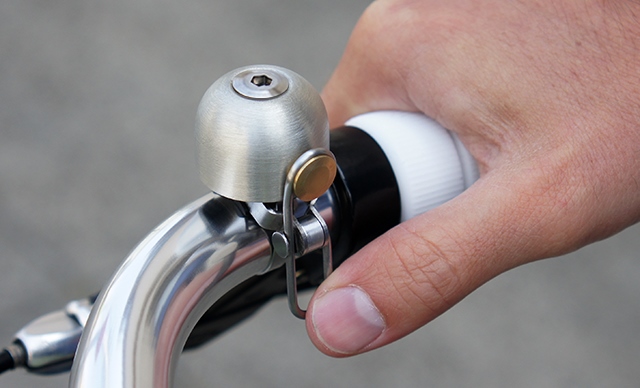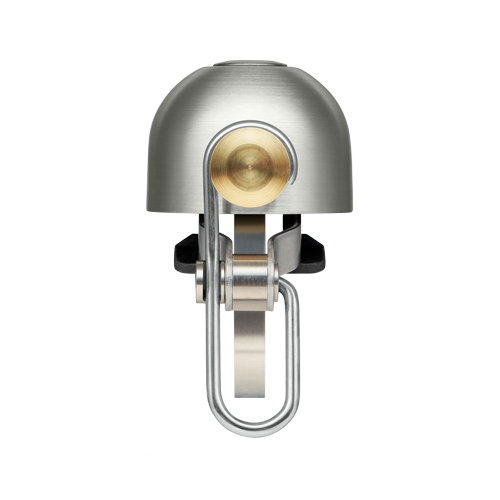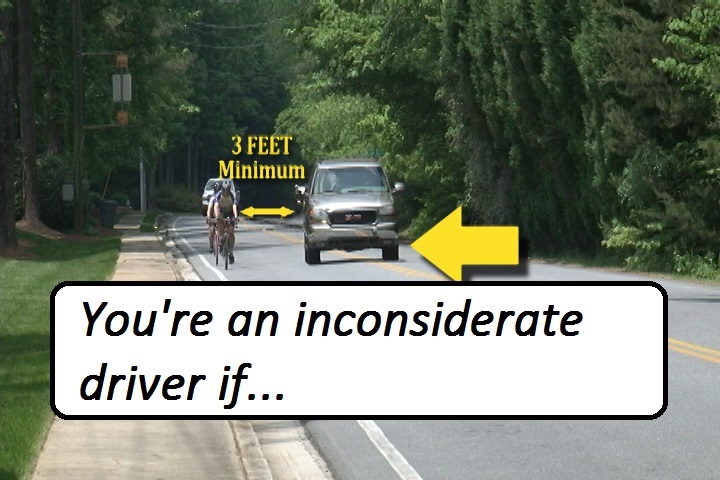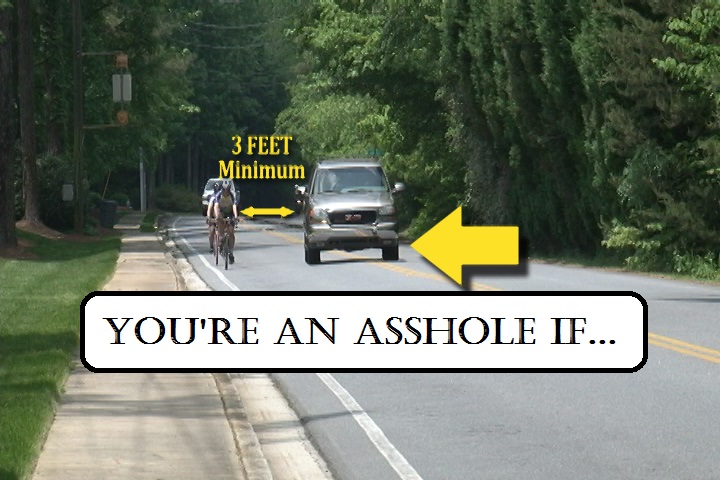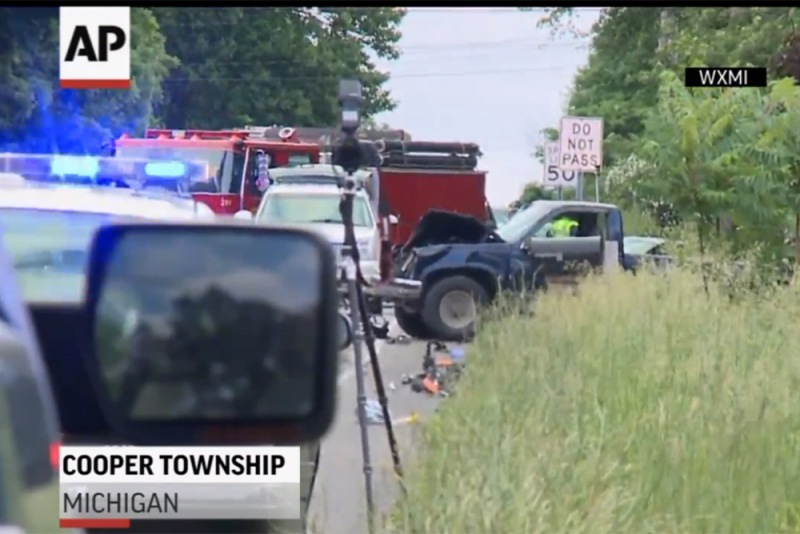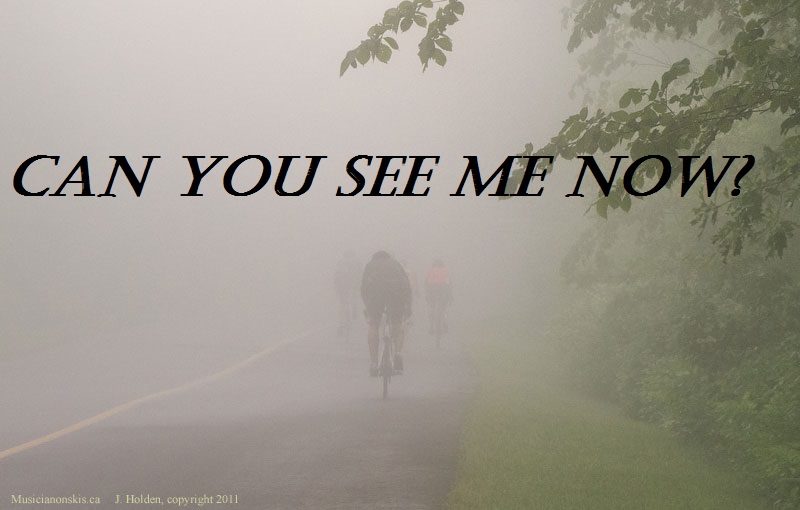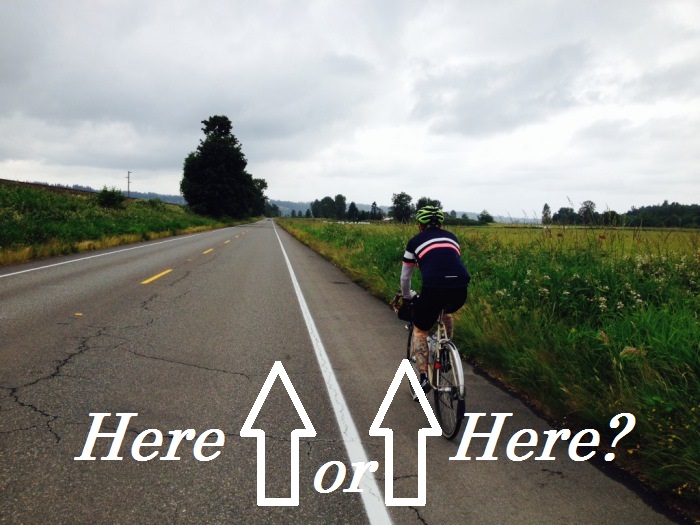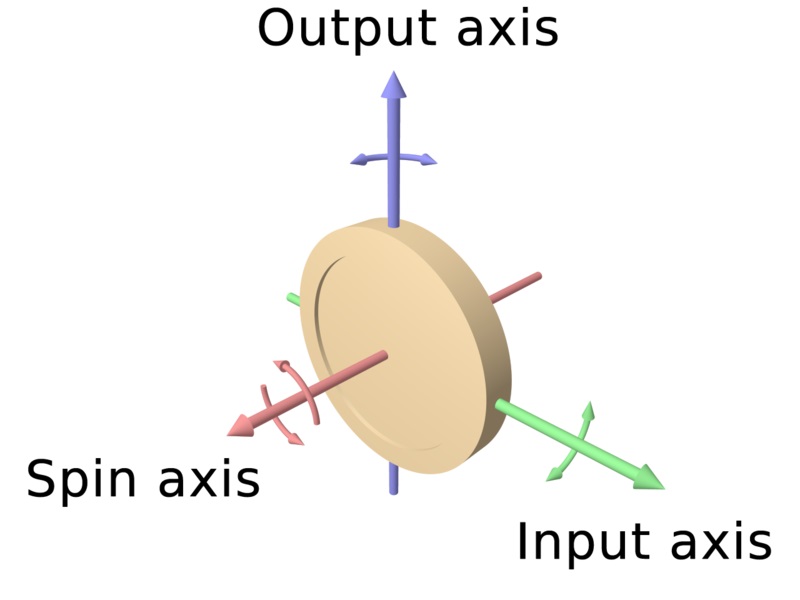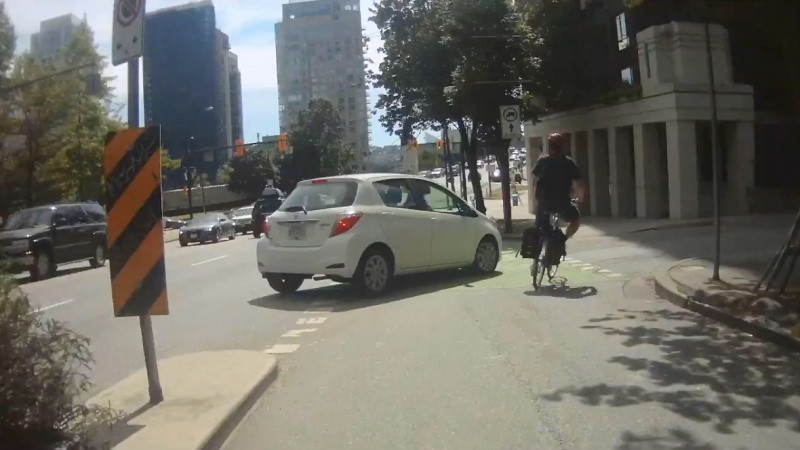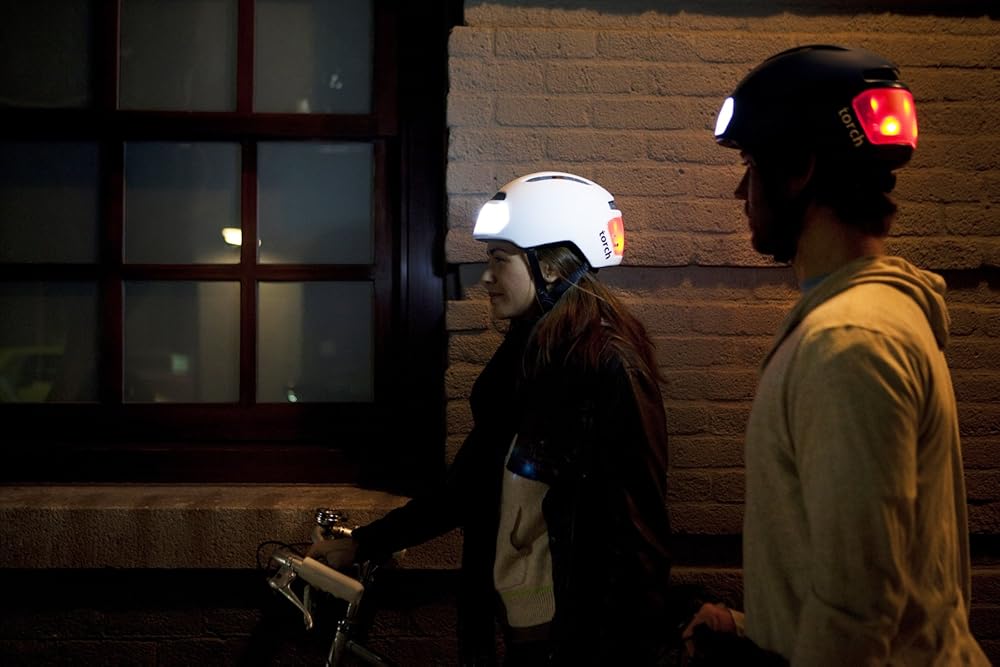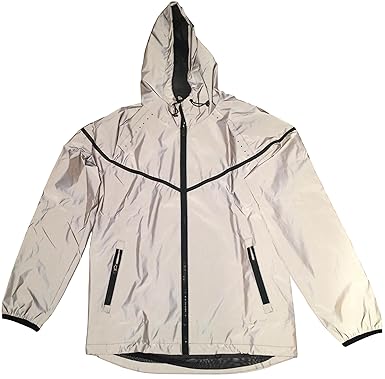
Alright, so it does sound dirty but the dutch reach could save someone from crashing or worse. It’s a pretty simple concept that everyone who parks on the street should be employing. Give it a try the next time you get out of your car and let two people who don’t cycle know as after all, they’re likely the ones who won’t be thinking about the mother riding down the street with her kids in tow when rushing out of the car. And hats of to Outside Magazine for putting this video together! Bike safe!
Why Use A Bike Bell – 5 Of The Best
A good bike bell is a very important part for the safety of yourself and others. In some states it is against the law to ride a bike without a bell. A bike bell allows you to be heard by other cyclists, motorists, and pedestrians. The ringing sound a good bike bell leaves in a persons ears, is much more efficient at warning them of your presence as that sound is generally an immediate association with bicycle. A bike bell will also cause a lot less possibility of confrontation than shouting at someone to let him or her know you are approaching.
Along with safety, warning someone you are approaching is one technique you will learn as your cycling etiquette improves. Ringing your bike bell is a great way to alert someone that isn’t riding to the right side on a bike path, or when approaching a rider that may be distracted and not riding all the way to the right on a road. There is a list of tips for better cycling etiquette that can be found here. Also, a friendly wave can be a great way to seem less threatening when passing someone. (Here is a great video on waving to your fellow cyclists.)
(The Best Bike Bell) X (5)
Spurcycle
Spurcycle has created a bell that is truly on another level and separates itself from all other bells on the market. This bell is made completely in the USA and is created with the highest quality materials available. The design is sleek and elegant and creates a high pitch lasting ring that can be heard from more than 100ft away. It’s also sleek enough to be used on the most expensive and top notch road and time trial bikes.
Origin 8
This bike bell is crafted out of all metal and can be found in many bike shops. This bell was created by Origin 8, a company that focuses on creating affordable bicycle parts. It is supposed to have a “Melodic resonant brass sound”. This is an affordable and practical bike bell that should fit almost all handlebars.
Bicycle Hamburger Bell
If you are looking for a cute and comical bell, this is the one for you. The hamburger bell is funny, but may help you to remember you are just riding a bike, enjoy it. Just don’t get to hungry on the ride; the company will probably not replace a half eaten bell.
Giant Bike Bell
Giant makes excellent bike products and is one of the largest manufactures in the world. This bell will certainly get the job done and will match perfectly if you ride a Giant! And even if you don’t, it’s a pretty sleek design that is good for the road, mountain, hybrid, or commuter bike.
Clean Motion Flu gel Horn
Not exactly a bike bell but serves the same purpose, and offers a different sound than the common bike bell. The horn is offered in a variety of colors and is very reasonably priced. It is constructed out of steel and should fit any handlebar.
You’re An Inconsiderate Driver If…A Lesson For Drivers
(This article first appeared here but with a different title and word describing drivers who put other people’s lives in danger. The word used was strong but as a car zipping by you less than three feet away gets your attention, so does the use of a vulgar word. It is re-published below for those who didn’t care for the use of that word and for those who wanted to share it but didn’t because of that word.)
Riding a bike on public roadways can mean placing your life in someone else’s hands. Not always the most comforting of feelings. Drivers don’t have the same degree of fear or vulnerability when passing a cyclist so they often don’t even realize the danger that they are placing another human being under because of their actions. Because of this, drivers have a tendency to be inconsiderate to cyclists. They may not realize it because to them, there is no real threat or degree of aggressiveness that they feel they are placing on anyone. This of course is some drivers as others will blatantly try to place cyclists in danger whether it’s buzzing them or slamming on the brakes in front of them. Regardless of if you’re intending on placing a cyclist in danger or if you don’t think you are, you’re an inconsiderate driver if you do any of the following. This website is obviously catered toward cyclists so please share with all of your non-cycling friends as well to keep all of us cyclists safer on the roads.
You’re An Inconsiderate Driver If…
- you pass a cyclist with less than 3 feet between any part of you’re vehicle and the cyclist. 4 feet if you’re in Pennsylvania.
- you don’t slow down to pass a cyclist.
- you don’t adequately check for traffic in the opposing direction before passing a cyclist.
- you pass a cyclist going into a blind corner.
- you are towing something and don’t give extra space to a cyclist when passing.
- you think cyclists should not be on the roadway.
- you pass a cyclist with adequate space but merge back into the lane before the rear of your vehicle has safely passed the cyclist.
- you ever swerve in front of a cyclist.
- you ever brake directly in front of a cyclist.
- you don’t wait for opposing traffic to subside before passing a cyclist.
- you try and squeeze past a cyclist regardless of circumstance.
- you accelerate excessively as you pass a cyclist with your diesel truck spewing fumes into their face.
- you turn right in front of a cyclist just after passing them.
- you ever run a red-light.
- you ever drive drunk.
- you don’t look for cyclists when turning out from a side road or driveway.
- you turn left across traffic without looking to see if there’s a cyclist on the other side of the road.
- you ever throw anything at a cyclist.
- you don’t stop at cross-walk for a bike path.
- you honk at a cyclist aside from a friendly one AFTER you have passed them. A friendly wave is nice with this as well.
- you’re a trucker and don’t realize the danger you’re placing a cyclist under when passing in an unsafe manner.
- you text and drive.
- you get out of your car parked on the street and don’t first look for cyclists before opening your door.
- you ever yell at or heckle a cyclist.
- you threaten a cyclist in anyway.
- you think your life or time is any more valuable than that of someone else’s.
- in general, you don’t watch out for cyclists.
Drive in a respectful, safe manner looking out for yourself as well as that of others. You are not the only one out on the road. Imagine if you hit a cyclist as this sad, tragic story recounts. You would have a very difficult time living with yourself knowing you took the life of someone with so much left to live. Drive safe. Everyone will thank you.
Anti-Cycling Display In Parade On 4th of July
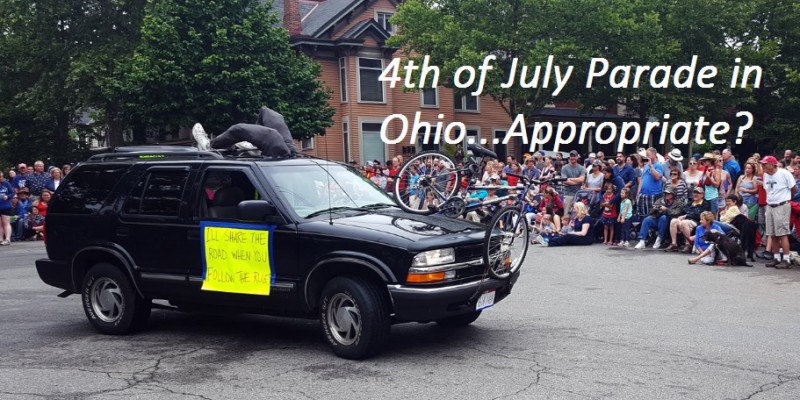
The 4th of July in the United States is a day to celebrate independence and everything we gained from it including free speech. There are parades around the country celebrating the day which often times are open to anyone who wants to have a float, performance, or another sort of spectacle. In Columbus, Ohio the Doo Dah Parade featured the above vehicle with a poster saying “I’ll Share The Road When You Follow The Rules.” As you can see, it’s insinuating that if you don’t follow the rules of the road as a cyclist, he is going to hit you. It is quite a surprise that the organizers of the parade ever let this person in as it is definitely a question of a true threat versus free speech that even courts have struggled to distinguish in the past. Regardless of if this person is under the protection of the First Amendment, it is still a clear message that he is trying to spread to not only cyclists but the community as a whole including children. For starters surrounding this, regardless of what the laws and rules say whether it is out on the road or what you can and can not do/say/portray in a parade, common sense should be used to avoid hitting a cyclist as well as to avoid riding on busy or dangerous roadways. No one should ever have the intention of endangering someone else’s life and if they do, they are the ones in the wrong and should be seriously educated whether it is in driving a vehicle or anything in life. Let us know in the comments below what you think of this. Should this have been allowed in a parade? And is he allowed to make threats like this?
You’re An Asshole If… A Lesson For Drivers
Riding a bike on public roadways can mean placing your life in someone else’s hands. Not always the most comforting of feelings. Drivers don’t have the same degree of fear or vulnerability when passing a cyclist so they often don’t even realize the danger that they are placing another human being under because of their actions. Because of this, drivers have a tendency to be an asshole to cyclists. They may not realize it because to them, there is no real threat or degree of aggressiveness that they feel they are placing on anyone. This of course is some drivers as others will blatantly try to place cyclists in danger whether it’s buzzing them or slamming on the brakes in front of them. Regardless of if you’re intending on placing a cyclist in danger or if you don’t think you are, you’re an asshole if you do any of the following. This website is obviously catered toward cyclists so please share with all of your non-cycling friends as well to keep all of us cyclists safer on the roads.
You’re An Asshole If…
- you pass a cyclist with less than 3 feet between any part of you’re vehicle and the cyclist. 4 feet if you’re in Pennsylvania.
- you don’t slow down to pass a cyclist.
- you don’t adequately check for traffic in the opposing direction before passing a cyclist.
- you pass a cyclist going into a blind corner.
- you are towing something and don’t give extra space to a cyclist when passing.
- you think cyclists should not be on the roadway.
- you pass a cyclist with adequate space but merge back into the lane before the rear of your vehicle has safely passed the cyclist.
- you ever swerve in front of a cyclist.
- you ever brake directly in front of a cyclist.
- you don’t wait for opposing traffic to subside before passing a cyclist.
- you try and squeeze past a cyclist regardless of circumstance.
- you accelerate excessively as you pass a cyclist with your diesel truck spewing fumes into their face.
- you turn right in front of a cyclist just after passing them.
- you ever run a red-light.
- you ever drive drunk.
- you don’t look for cyclists when turning out from a side road or driveway.
- you turn left across traffic without looking to see if there’s a cyclist on the other side of the road.
- you ever throw anything at a cyclist.
- you don’t stop at cross-walk for a bike path.
- you honk at a cyclist aside from a friendly one AFTER you have passed them. A friendly wave is nice with this as well.
- you’re a trucker and don’t realize the danger you’re placing a cyclist under when passing in an unsafe manner.
- you text and drive.
- you get out of your car parked on the street and don’t first look for cyclists before opening your door.
- you ever yell at or heckle a cyclist.
- you threaten a cyclist in anyway.
- you think your life or time is any more valuable than that of someone else’s.
- in general, you don’t watch out for cyclists.
Drive in a respectful, safe manner looking out for yourself as well as that of others. You are not the only one out on the road. Imagine if you hit a cyclist as this sad, tragic story recounts. You would have a very difficult time living with yourself knowing you took the life of someone with so much left to live. Drive safe. Everyone will thank you.
Cyclists Killed In Michigan – What We Can Learn
Whether it’s gun violence or irate drivers, hearing of a tragedy such as the cyclists killed in Michigan a few days ago is never easy, especially when its innocent victims who were simply in the wrong place at the wrong time. Even though you probably don’t have any direct connection to an event, it hits you deeper than you would have thought. You place yourself in a similar situation and imagine how it would feel if you were one of the victims parents, children, significant others, or simply friend. In this particular situation, it’s easy to point fingers and say what caused it. This is not always the case but regardless, there is always something we can learn from events.
Danger in Any Activity
Because we live in a world where actions have consequences, there is always some amount of danger in anything that we do. A meteor could plummet out of the sky, hit you, and you wouldn’t even know what happened. This of course has a ridiculously low probability of occurring (1 in 20,000,000,000,000 chance) but it’s still a chance. The level of fear we have in a situation is largely dependent upon how much control we have with the less control resulting in greater fear. This lack of control can be attributed to someone else or our own lack of ability in a certain situation.
Danger Riding A Bike
Taking the lack of control in a situation toward riding a bike; we have control over the majority of situations meaning that we dictate how fast we go through a corner, which roads we ride on, things of that nature. The things we can’t control, which is where the majority of fear resides in riding a bike, are the things like irate drivers, mountain bikers coming around a corner on a trail that neither one can see through, or drivers that simply don’t care and will run you off the road. These are the things that scare us the most riding a bike.
Being Okay With Not Being In Control
When we’re not in control of a situation it’s very hard to be comfortable; this is human nature and what helps to keep us alive. As cyclists, particularly road cyclists, we become used to the constant buzz of traffic and what was once a large fear, and is for the vast majority of humans, no longer scares us as much. This is you becoming more okay with not being in complete control; you can’t control what that driver does behind you but you have some amount of trust in them not to hit you. Nine times out of ten, or probably more accurately, 9,999 times out of 10,000, or more even, that driver is not going to hit you and values life regardless of whose life it is.
What Can We Learn From The Cyclists Killed In Michigan
If something like this were ever to happen to you, the one thing you would probably want is for it to never happen to anyone else ever again; that people should have learned from the event, whether drivers, riders, law enforcement, or law makers. The bad things in history should never repeat themselves because in theory, we are smart beings who can learn from our mistakes. Unfortunately this doesn’t always happen but what we can do is to help make a situation like this as least likely to happen again as possible. We of course aren’t all but are definitely one of the above; drivers, riders, law enforcement, or law makers and can help to have an impact on the likelihood of a repeat occurrence. If you are one of the following you should:
Driver: be aware of your surroundings including cyclists. They will be where you least expect them and where you are not looking. If you are unaware how to drive around cyclists, read this. And of course you should never, ever drive impaired (the likely cause of the tragedy in Michigan).
Cyclist: never trust anyone other than yourself or someone that you have reason to trust. This means that you should not trust that the driver behind you is going to see you and not hit you. The more aware that you are and the less busy roads you choose will help in lowering the likelihood of an incident like the one in Michigan from happening to you. Of course it is always still a possibility as in this world we can’t take the probability to zero of something bad happening. It’s something we have to live with and we know that freak accidents like the one in Michigan can happen.
Law Enforcement: do what you’re trained to do. Protect citizens and enforce laws to protect citizens. Relating to cyclists; this includes watching out for irate drivers and should a driver create a dangerous situation, correct it by educating them in an effective manner to help ensure they never do it again and that they are not just aware of cyclists but are looking out for them.
Law Maker: do everything you can to ensure that laws are passed that help to protect cyclists and create safe roadways. This includes things like creating 3+ foot passing laws and should an accident occur, whether injury or death results, appropriate punishments be carried out to not only serve justice but to show others that should you hit a cyclist with a vehicle, you will be punished to the fullest extent of the law; much like hitting a construction worker is punished.
Other: regardless of who you are, should you see an irate driver, as a number of citizens called in the driver prior to the incident, do everything in your power to stop them. This is largely dependent upon the situation and in most cases it is notifying the appropriate authorities.
In Closing
The tragedy of the cyclists killed in Michigan is something you never want to hear of. Innocent people just out enjoying the day and never making it home. It’s easy to be angry, sad, scared but one thing you can take from this is learning that there are things we have control over and things that we do not. In those situations that we do not, make sure that you do everything you can to have the most control possible. Stay safe, stay in control, and do whatever you are capable of to help prevent a tragedy like this from ever happening again.
Cycling In Fog – How To Make It Safe
Depending upon where you live, morning fog and fog in general can be a regular occurrence that you have to deal with whether commuting or getting a training ride in. Driving in the fog can be hazardous but cycling in fog can be even more so. The best approach is to avoid it if you can; ride later in the day, choose a different route, etc., but those aren’t always options. If you do have to ride in fog, make sure you know how to and know what to wear. It can save your life.
Avoiding Fast, Busy Roads While Cycling In Fog
Obviously in heavy fog, visibility is drastically reduced. Under normal conditions, drivers may not see you but in foggy conditions, the chance is even greater. The best way to make sure that a driver doesn’t come up behind you suddenly is to simply avoid roads where they can do so. Choose a route with little to no traffic such as a bike path, back roads, or neighborhood roads even. Removing one of the variables will make your ride extraordinarily safer.
Riding Defensively
If you do have to cycle on a road that receives more traffic, you must ride like you are invisible because, well, you pretty much are. As a car approaches, you will be able to hear it, slide to the side of the road completely out of the cars path. This way if they don’t see you, they miss hitting you. When approaching intersections you must be very aware of traffic coming from every direction. Never assume that they see you, particularly vehicles that are turning or pulling out. If you must, slow and stop to avoid crossing the intended path of a car.
Be As Visible As Possible While Biking In Fog
While riding, you should always wear things that are visible but must do so even more when riding in fog. This includes things such as the following:
- Bright colored jersey/jacket.
- Rear flashing red light. The brighter the better.
- Front flashing head light. Again the brighter the better.
- Reflectors on your feet/ankles. The movement of your feet will catch an eye more easily. Some cycling shoe covers also have reflectors on the rear of them giving you more visibility as well as toasty toes.
Staying Warm
With fog comes moisture. With moisture comes a chilling effect due to the heat transfer properties of water. If you are riding with bare skin on your legs and/or arms, moisture will develop on the surface causing you to become cold very quickly. In addition, fog often forms at lower temperatures so the combined cooling effects of moisture on the surface of your skin and the outside ambient air temperature create the conditions for a bone chilling ride. Treat cycling in fog like riding in the rain; meaning wear a rain jacket or at the very least, arm warmers and leg warmers.
Glasses Fogging Up
With the added moisture in the air, your glasses will likely fog up much easier or at the very least, get water droplets on them. Keeping them clear will be a huge help as not being able to see through the fog itself is bad enough. You don’t need to add another barrier to seeing well. If you take your glasses off, riding with a cycling cap can be a good option as it keeps some of the wind and any rain out of your eyes.
Where To Ride A Bike On The Road
Riding a bike in the middle of the lane on one road could get you killed while riding in the same spot on a different type of road could keep you alive. Knowing where to ride a bike on the road with differing road and traffic situations is a must know for bike riders of any level.
Which Side Of The Road Should You Ride On?
You should always, always, always ride with traffic, never against it. This means on the right-hand side of the road in the majority of countries in the world. Riding against traffic puts you and the vehicle in greater danger as there is a much greater difference in speed as two object approaching each other will meet much quicker than two objects traveling in the same direction at the general speed of bicycles and vehicles. This reduces the time a driver has to react as well as a cyclist. Also, if a collision were to occur, it would be much worse head-on than if both objects were traveling in the same direction. Also, navigating intersections is much easier and safer when taking the same path as a vehicle.
Where On The Shoulder and When?
Now that you know roughly where to ride a bike on the road, how far to the right should you ride? This depends upon the road and the traffic. Being in one place on a certain road will keep you safe while that same place on another can be very dangerous.
Right Of The White Line
If a road has a lot of traffic, more than ten or so cars passing in a minute, you should ride on the right side of the white line. This is because when vehicles are behind one another they often can’t see past the vehicle ahead of them. If a rider were to ride further into the lane to force the vehicle to move over into the other lane to pass, it could create a more dangerous situation with the potential for a head-on collision. Additionally, as the vehicle moves over, the vehicle behind may not have time/be paying close enough attention to slide over around you resulting in being rear-ended. Staying to the right of the white line avoids this. While being out of the travel lane, you still want to glance over your shoulder to make sure no drivers are texting and drifting over to hit you.
Left Of The White Line
When there is less traffic than described above, you will want to ride just to the left of the white line by one to six inches. This places you in the field of vision of the driver as they may not be looking down the side of the road to see if a cyclist is there. This then forces them to slide over and around you while also making sure there is no traffic coming in the opposing direction. As the vehicle begins to pass you, you should then slide to the right of the white line to give even more space for them to pass.
If There Is No Line
On many roads there is no white line. In this situation you should ride roughly on the right side of the right most tire track when there is little traffic. With more traffic you should ride further to the right where traffic can pass you safely without hitting you while you are still on the road.
Where To Ride A Bike On The Road When There Is No Shoulder?
In many places there isn’t a shoulder wide enough to safely accommodate cyclists while vehicles pass. These roads are often built just wide enough for two vehicles to pass and that’s it. To the right of this is a ditch, grass, woods, you name it. Whether there is little or a lot of traffic you need to ride on the right side of the right most tire track. This will force the vehicles behind you to slow and move into the other lane to pass when there is no opposing traffic. If there is opposing traffic or a corner that they can’t see through, they have to wait behind you as the lane is not big enough accommodate the both of you. In some areas (particularly rural, low cyclist populated areas) drivers will get mad at you but this is the safest option for both you and the vehicle. In this situation you must keep an eye on vehicles approaching from behind and if they don’t see you or attempt to squeeze by anyway, you need to hightail it off the road regardless of what’s there. Crashing on your own will always turn out better than being hit by a car.
When Turning Where Do You Go?
As stressful as knowing where to ride a bike on the road can be, intersections can be just as stressful if you don’t where to go and when. The key is to approach them exactly as you would as a vehicle. This means that when you approach a traffic light and want to turn left, begin to slide left into the lane before the intersection and then into the turning lane if there is one. If you’re turning right, you can just stay to the right and proceed when clear of traffic from the other directions.
What’s A Speed Wobble and What Do You Do When You Get One
You’re going down a fast descent and all of a sudden your bike starts to speed wobble and shimmy beneath you. What do you do? What’s happening? How do you avoid crashing?
What is a Speed Wobble?
A speed wobble, or speed shimmy, or death wobble, is when the front of the bike starts to shake violently back in forth originating from the front fork and wheel. This oscillation of the handlebars and the front of the bike violently back and forth is due to an occurrence called Hopf-Bifurication. This is a high end physics term used to describe the point at which a system’s stability changes to that of a periodic solution. This means that the bike maintains stability through a deflection in one direction followed by a deflection in the other to maintain equilibrium. This is much like that of a top that is spinning, slowing, and beginning to wobble back and forth yet still staying upright.
What a Speed Wobble Isn’t
A speed wobble is often mis-described as a resonance phenomenon where the bicycle hits a resonance frequency and begins to shimmy. According to Eric M. Bolt, W. Jon Harrington Professor of Mathematics Clarkson University, this is not the case as there is no periodic forcing nor is there a building of amplitude in a speed wobble on a bike, both required for a resonance phenomenon. In laymen’s terms, this describes that a force such as a bumpy road, which places differing forces upon the wheels and frame, can induce the effects of a speed wobble where in fact it can just as easily occur on a smooth surface. Secondly, when a speed wobble occurs, it doesn’t begin as a slight shimmy and build to a larger and larger amplitude but rather begins at a point known as critical speed, or the point at which the bike crosses the Hopf bifurcation value, and shakes violently back and forth at a more set amplitude.
What Causes a Speed Wobble?
On a bike, a speed wobble can be caused by a number of things. The first is rider placement upon the bike. Distribution of weight centered more toward the rear of the bike causes the front end of the bike to loose stability at speed. It would be like if someone were to shake a swimming pool noodle back and forth holding onto one end while you held onto the other end in a fixed position; the noodle would form s-bends but if you were grab the other end of the noodle by the person’s hands as well, it would stabilize it thus removing the s-bends. On the bike, the person shaking their hands back and forth is the occurrence of Hopf-Bifurication and controlled instability as the critical speed of the bike is reached.
Fixing and Avoiding a Speed Wobble With Weight Distribution
Holding the handle bars and placing more weight on the front end of the bike will stop the speed wobble and if you keep enough weight toward the front of the bike, it will help avoid a speed wobble in the first place.
Insufficient Frame Rigidity As A Cause
The second cause of a speed wobble is insufficient rigidity of a bicycle frame itself, particularly the top tube. This often occurred in older bikes but newer models are now stiffer and more rigid thus reducing the occurrence of a speed wobble. The rigidity of the frame simply increases the critical speed so you have to be going faster to induce the speed wobble.
What To Do When You Get A Speed Wobble
In addition to keeping your weight more evenly distributed, a quick, simple way to control the bike and stop the speed wobble is to squeeze your knees together onto the top tube with the pedals at 3 and 9 o’clock (where they most likely already are as this is how you should descend unless going through a corner). This will immediately stop the speed wobble and allow you to brake to a more manageable speed for the bike you’re on.
The Take Away
Getting a speed wobble will scare the crap out of you no matter how many times you’ve experienced it. Not knowing what to do can be even scarier. Remember just squeeze your knees onto the top tube whenever it happens, then brake to slowdown. To help avoid it from happening, keep your weight more evenly distributed between the front and rear wheels and always make sure you have a grip on the bars but not a death-grip.
How to Not Get Hit By a Car Riding Your Bike
A large fear of riding a bike is getting hit by a car. This fear is more than justified as seemingly you can’t go a week without hearing about someone being hit. The good thing with vehicles and cyclist collisions is that they are not just left to chance. They are a combination of driver error and lack of know-how by the cyclist the majority of the time. The combination of the two can produce deadly results but improving either side will reduce the chance of an incident to almost zero. As a cyclist you can’t change the other side of the equation (at least in the moment) but you can take action on your side to not get hit by a car. Taking the appropriate actions ahead of time, during the critical moment, and constantly being aware will decrease your chances of getting hit and allow you to ride comfortably. You do not want to eliminate that fear however as that is what keeps you alive. You just want to be able to effectively manage that fear to keep you safe.
Top Ways Cyclists Get Hit By a Car
The majority of collisions between cyclists and vehicles happen in the following situations. All of these are driver error largely because they don’t know the cyclist is there. (It is very rare that a driver will see you and still execute one of these actions unless they think they have time enough to get ahead of you but in fact don’t.) The one thing you have control of in these situations is you. You may not think that you will remember these actions while on the road but having gone through the thought process once or more before will allow your brain to think and react quicker in a situation on the road.
The Pull Out
This is where a car is pulling out onto the roadway from a side street, driveway, parking lot, or other area. The driver will look quickly and not see a cyclist approaching thus hitting them.
Cyclist’s Action
This will happen most often on busy roadways as the driver is intent on quickly getting into the travel lane before any approaching cars which minimizes the time they spend looking in either direction to make sure it is clear. As soon as you see a car approaching the roadway to turn out, assume they DO NOT see you. Stop pedaling, sit up more to make yourself more visible, try and make eye contact, and if they still don’t acknowledge you, put on the brakes and slow and stop if need be. If there is not enough time to do this, turn into the side road, driveway, parking lot, etc. of which the vehicle is turning out of. This will prevent you from crossing the projected path of the vehicle.
The Left Cross
A vehicle turning left across the roadway is one of the most dangerous maneuvers that a cyclist can be on the wrong end of. This is because the speed is higher and movement is more in opposing directions multiplying the forces should an impact occur. Vehicles will look up the lane to see if it is clear and not necessarily across the lane to see if a cyclist is there. If they do see the cyclist, it is often because the movement caught their eye. Not because they were looking to see if they were there but by chance saw them.
Cyclist’s Action
This is one of the most difficult maneuvers to recognize and have time enough to take action because of the potential speed and distance between the two being greater at the time an action needs to begin taking place. There are actions to take to be more visible (of which will be touched on below) but that still is relying on the driver seeing you and not making an error. The first thing to do to help avoid this incident is anytime there is a road to your right (in countries where you drive on the right), parking lot, etc. look to your left and up the road to see if any traffic is coming or potentially pulling straight across the roadway. If there is, immediately look for any turn signals or slowing that might be occurring indicating a turn. Because the distance is greater, it will be difficult to make sure that they saw you and to make eye contact. The best action is to stop pedaling and brake as you approach where the vehicle will turn. If the vehicle hasn’t stopped to let you continue straight, come to a complete stop before you would cross their line of travel. If you do not have time to stop or it is better/easier, turn right into where that vehicle is turning but do so as far to the right as possible to not cross the vehicle’s line of travel.
The Right Hook
This can happen particularly frequently in areas where drivers are less used to cyclists. This happens when a vehicle passes you and then turns right at the next road, parking lot, driveway, etc. crossing your path. It happens because they: one, don’t see you at all even when passing, or two, misjudge the speed you are traveling and think they are far ahead of you by the time they get to the turn, or three, forget they just passed a cyclist and turn into you.
Cyclist’s Action
Unless the vehicle just flat out doesn’t see you and turns straight into you, you will most likely have time to slow and make sure that they are going to wait and not turn into you. Whenever you are approaching a right hand turn where a vehicle is either next to you or has just passed you, slow down until you are certain that they are going to stop and wait for you to pass. If they don’t wait, you will have slowed enough to not be in their path. If you don’t have time enough to slow and/or stop, turn right with the vehicle and as far to the right as you can to avoid crossing the intended path of the vehicle.
Car Doored
In many areas the bike lane runs right in the path of a parked cars swinging door. In areas where cyclists are a regular occurrence, people think to look before they open their door to get out of their vehicle. This doesn’t always happen though and you shouldn’t bank on it.
Cyclist’s Action
The best way to avoid this is by simply riding far enough to the left of a parked vehicle where even if a door was swung open, it still wouldn’t hit you. The issue here however is that this will potentially put you in the path of passing traffic. The best way to overcome this is to ride as far to the left as possible without being in the lane. When a car does pass, you can slide slightly right but looking at each and every parked vehicle to see if someone is potentially getting out. This can be difficult but will lessen the chance of getting hit. When there is someone getting out of their vehicle right in front of you, you can’t simply swerve into the lane as you will potentially be hit. You need to slow as much as you can and only swerve enough to miss the door but not all the way out in traffic. Correcting the previous statement of “the best way” to avoid getting car doored is to simply avoid roads that have a lot of parked cars where you can’t easily ride far enough away from them. Find a better, less traveled route if possible.
Hit From Behind
This is probably one of the biggest fears cyclists have of getting hit by a car. Because of the speed difference and so many people on their phones and not paying attention, this fear is more than valid. However, the majority of cyclist – vehicle collisions do not happen this way. They occur in one of the above scenarios. It does still happen however but you can do a number of things to minimize the chances of it.
Cyclist’s Action
Being seen by the driver is the most obvious way to avoid getting hit from behind. However that relies upon the driver and not necessarily your actions. Wearing bright clothing and lights when needed will help. Riding in a way that makes you visible to drivers while still getting out of the way of any distracted drivers is the key. It depends on how many vehicles are on the road and passing you but riding on or just to the left of the white line or where it would be, puts you in the field of vision of the driver. They are not always looking down the side of the road to see what’s there since they are not driving there. This also then forces them to move over into the other lane slightly and to pass when it is clear instead of trying to squeeze past you. The issue here is when a driver doesn’t see you even when you are in the lane. You need to look behind you and see when a car is approaching. You will first hear it and then look. Just as the vehicle is about to pass, slide right to the side of the road regardless of if they have moved over or not. This gives more space and would allow a car to pass without hitting you if they in fact didn’t see you.
Traffic Lights
Traffic lights can be a potential hazard because of the close proximity of a lot of vehicles and the speed some may still be carrying. Stopping and passing through them in a way that is predictable, visible, and risk-averse will help you to not have any issues.
Cyclist’s Action
When approaching a red light, whether there are vehicles present ahead of you or not, do so in the same way as if a car was passing you. Ride in the lane to be seen and then slide right to not get hit should they not have seen you. Also if there is a vehicle ahead of you and you can slide down the right side of the road all they way up to the traffic light, do so. If you can’t, don’t stop immediately behind the last car in line but rather to side of it that way if a car coming up from behind doesn’t stop in time, you are not sandwiched between the two cars.
Riding Like You’re Invisible
In traffic, if you ride like no one can see you, you will greatly improve the odds of not getting hit. This means whether riding down the side of the road, riding through an intersection, or when cars pull out from side streets, you slow and stop if need be and/or ride in a position where a vehicle won’t hit you. This is important also on ultra busy roads where you can’t ride in the lane and then slide over for each car but rather have to ride down the side of the road. As long as drivers drive their normal way you’ll avoid any potential collisions. Some may argue that a cyclist has just as much right to the road and that they shouldn’t have to ride down the side of it or slow or stop in an intersection when they don’t have to but unfortunately regardless of who is at fault, we as cyclists are the ones who will always come up on the short end of the stick should a collision occur. A couple thousand pounds versus your 100 or 200.
Trust No One
Along with riding like you’re invisible, you should ride with the mentality of trusting no one. You have no idea who is behind that wheel and how good or bad of a driver they are and how respectful they are to cyclists. Always error on the side of NOT trusting the driver. Always thinking that they are not going to see you when they are pulling out from a side road, driving down a regular road, or turning in front of you will always have you braking and double checking that they do in fact see you. Never assume that they do. This alone will keep you from getting hit by a car even if you don’t know all of the above actions for each situation.
Pay Attention
When riding it can sometimes be difficult to pay attention the entire time. This is OK and we all do it. Only do it however when you’re on an open, empty stretch of road. If you’re around traffic or have a lot of intersections to navigate, pay attention. Seeing an issue before it occurs will give you time to react. Your head should be on a swivel looking for cars ahead, to the side, and behind. Constantly be aware of everything around you. Also make sure your hands are positioned on the bars so you can steer quickly as well as brake if need be to avoid getting hit by a car.
Changing Your Mentality to Avoidance
In addition to the above tactics, the best way to avoid contact or even close contact with a vehicle is simply to avoid them. Find the roads, routes between home and work, and bike paths that take you away from not only potentially dangerous roads but the majority of traffic in general. In some places this can be difficult to do but there are always other options even if it involves a longer, less direct route. Seek out these routes and make them your go to. Having a little bit longer of a commute or an out of the way road to enjoy on your ride is better than not making it to your destination or home after a ride. It’s never worth it and staying safe should be our priority number one. If we’re not going to stay safe doing what we love, then we should find other things to love. Getting hit by a vehicle and potentially dying, especially if it’s at the fault of another, is not something that should be taken lightly. Ride smart, stay safe, trust yourself and no one else, and live to ride another day.
Visibility Additions
These few products can help to not get hit by a car by improving visibility. In general, you should always wear brighter colored clothing but these will help to make you even more visible particularly at night or during low light conditions.
The Torch T2 Bike Helmet adds lights to your helmet to improve visibility.
The BrightLuz High Visibility Super Reflective Hooded Cycling Running Jacket is an ultra reflective jacket that can be worn at night, in low light conditions, or in the rain when drivers can have a harder time seeing.
Bright colored jerseys such as the FIOLLA Cyclo-Dri Mens Cycling Jersey/ Neon Hi Vizare are definitely the way to go to increase visibility regardless of ride time or location. A lot of companies have bright colored jerseys so find a good one that you like and will wear all the time. Some people think you don’t look “cool” or “stylish” if you wear a bright colored jersey like this. You know what’s not cool? Getting hit by a car. Wear one. Another good option is a brightly colored vest over your jersey.
Authors Note:
Over the recent few months I have had a number of friends and acquaintances hit by vehicles with some sustaining severe injuries. Each had their own scenarios but I can’t help but wonder what could have been avoided by changing the approach of the rider; the one thing we have control of in the moment. Perhaps nothing, maybe a little, but regardless, hopefully riding in the ways described above will help you to be safer on the roads. The approaches above are a combination of general cycling know-how and my own experiences. Knock on wood, I have never been hit by a vehicle after probably over 100,000 miles of riding in big cities, to small rural roads from first to third world countries the world over. Some of it comes down to luck, but a lot also comes down to your approach and mentality toward riding and how you deal with traffic.
